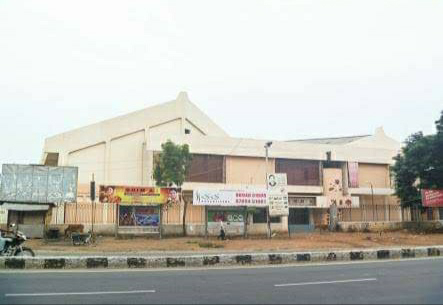Origins | Pappapati Ochandamman | Usilampatti - Madurai
#origins #PiramalaiKallar
I'm a descendant of a 'Denotified Tribe' (DNT; Tamil: Kuttraparamarai), which is a misnomer. According to a study, we were the primitive humans migrated from Central Africa to Southern India, even before languages came into existence. After all, humans invariably lead nomadic existence.
Staying true to the roots. Our grandfather Bhavathevar and father Thangapandian were among those, instrumental in the formation of the committee and rejuvenation of thousand years of legacy of "Pappapati Ochandamman Temple", Usilampatti, Madurai. We, "Piramalai Kallars" do not believe in the notion of religions. Therefore, we don't follow any God but our ancestors. Because of some unresolved conflicts of interests among our ten brothers, we have not been able to worship our forefathers as a festival for three decades now, which typically happens in February - March (Masi - Tamil month). No central, state governments and bureaucrats could intervene and reach consensus among the brothers. Ironically we are adamant and compassionate, which are quintessentially "#PiramalaiKallars".
#BT
#PappapatiOchandamman
My Father's name B. Thangapandian in the inscription:
My grandfather's name Bhavathevar mentioned in the inscription:
We, Piramalai Kallars of Madurai - Usilampatti - Theni - Cumbum - Dindigul - Thirumangalam belt, follow our ancestors as Gods. ' Pappapatti Ochandamman Koil ' is one of the largest and oldest temples, as our mother ' Ochandamman ' gave birth to ten Thevars, and each became clan of their own. Although, ' Mahashivaratri ' was not worshiped for the year (2015) at our temple because of some legal proceedings. It did not deter her children flowing in thousands since morning, and it continued until next morning.
13th April 2014:
I was enroute to my soil usilampatti. At Valandur Ochandamman kovil.
ஓம் நமசிவாய!
Nomadic #piramalaikallars settled in #Madurai, Southern India were descendants of #Sivan, an alter ego of #BT
Kamal Hassan is amongst the filmmakers who have been instrumental in disseminating the ways of life of the Thevar community throughout the world through his features. While Thevar Magan released in 1992, which completed its 29th anniversary this year, dealt with the disputes and rivalry between two families and their villages of "Maravar" clan of "Thevars". Whereas, "Virumandi" released in 2004, was about the "Piramalai Kallars" clan of "Thevars", which primarily dealt with the camaraderie and betrayal between "Piramalai Kallars" and "Naickers" and a propaganda intertwined in the story against the death penalty.
I MayandiThevar (ancestral name) aka BT is a Piramalai Kallan and shares the notion that no matter what we become we must stay true to the roots - they could be an atom, the fundamental building block of the universe or a community.
I coexist in the worlds of quantum mechanics and the socio-culturally divided. I understand the extremes of the spectrum. Therefore, do contemplate before putting forward your argument on a variety of topics. Unlike most, my knowledge is not concentrated, it is diversified and unrelated. I'm certain that this sounds like a self propaganda. But, I'm deliberately doing it for a reason.
17 years ago yesterday on 14th January 2004, I watched Virumandi at Madurai Ambiga theatre, 5 am show. About ten of us from our clan went in an auto with the name painted on the front of the auto as "Virumandi" [In Pirmalai Kallar, our anscestors are our gods. Virumandi Thevar was one among them, and he is a brother in law to us in relationship]. The auto was actually owned by a Virumandi Thevar, whose son was our ally. In the colloquial language of Madurai that auto was our "Top" [A place where people hang out] from school (1997 - 8th standard) to graduation (2005 - Engineering). Then we spoiled our life by going to Madras for employment.
This blog is not exhaustive. And, there will be addendum.
Authored by Balaji Thangapandian aka #BT - a spacefarer, who is also curious about film-making, connectivity technologies and military history.



















Comments
Post a Comment